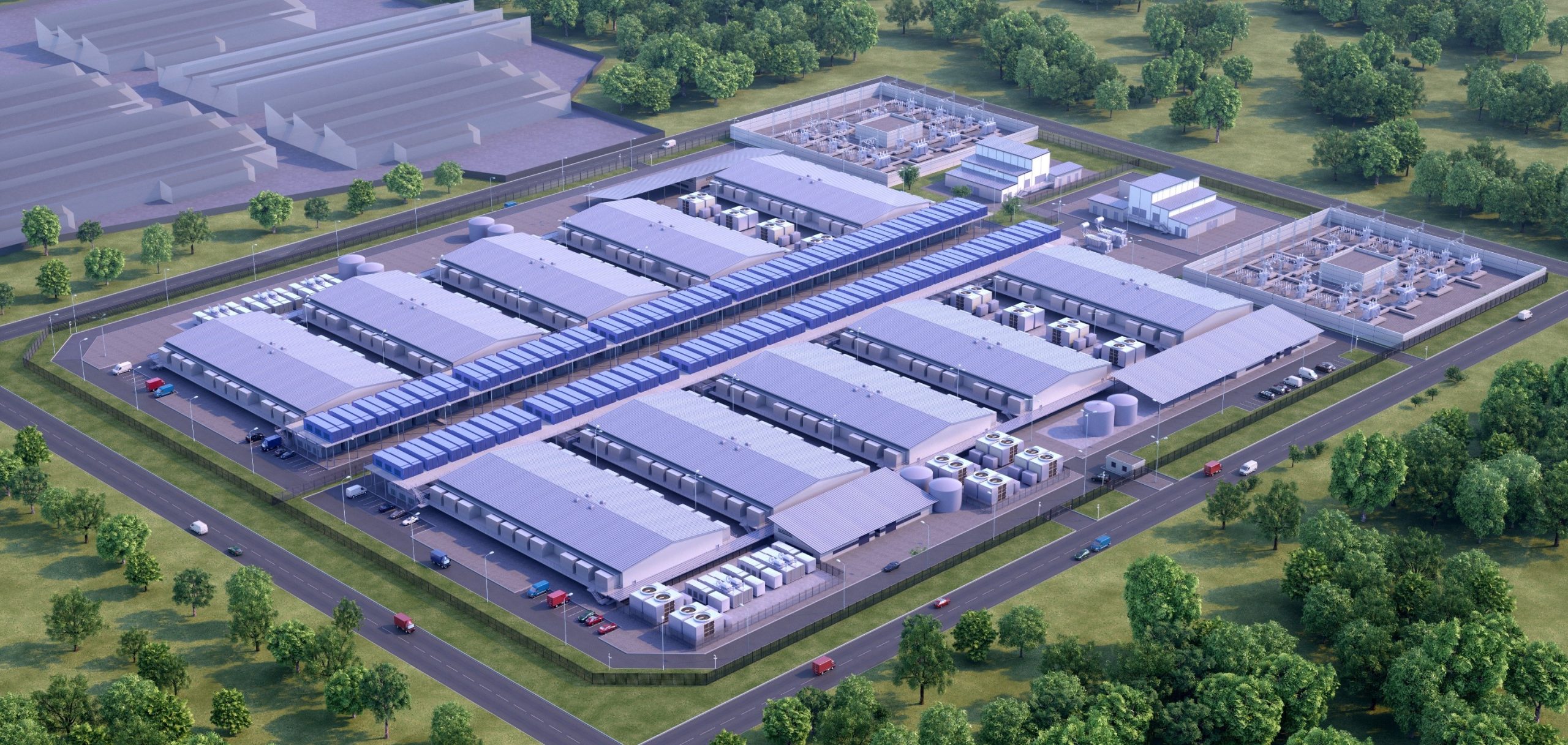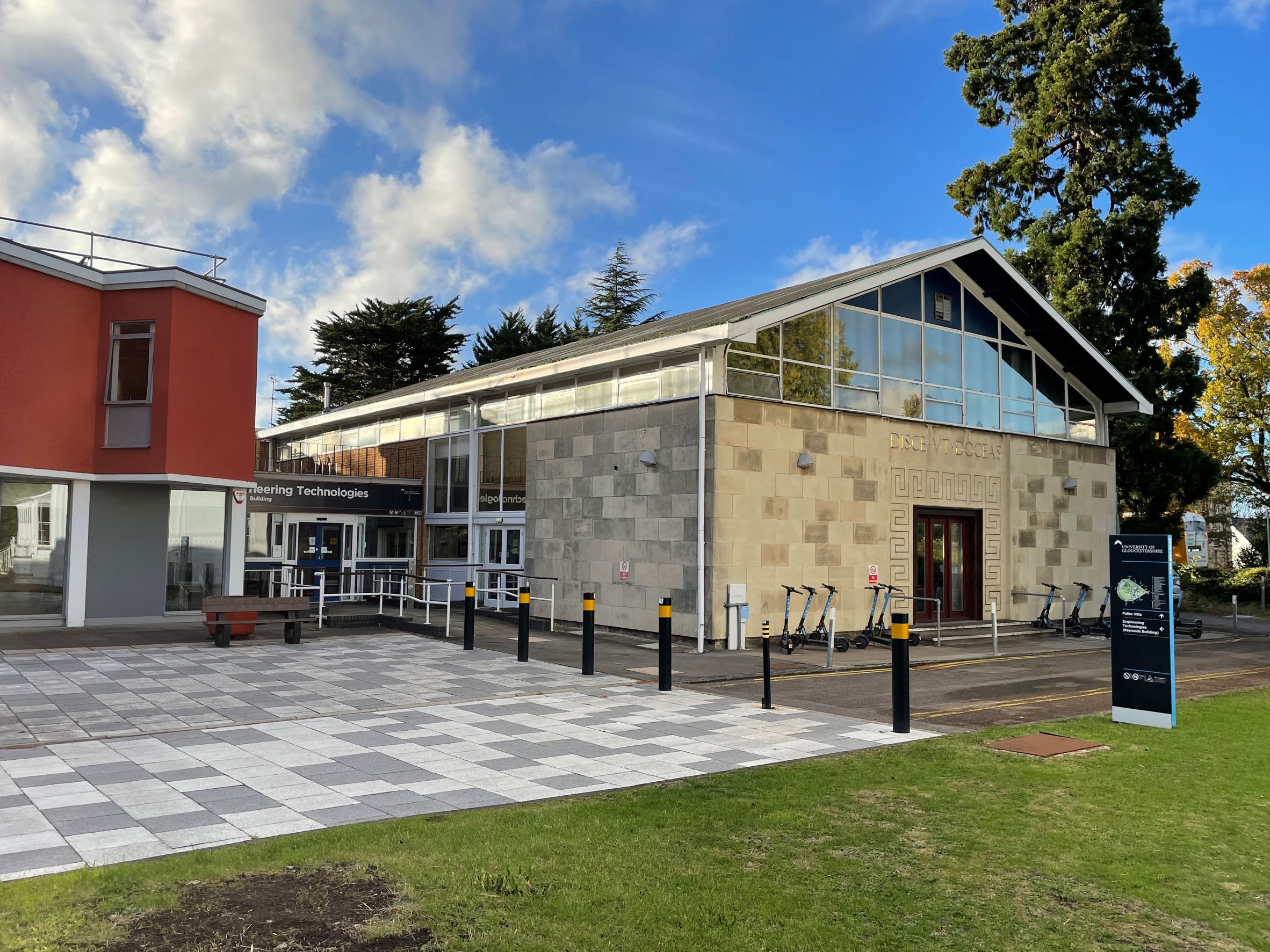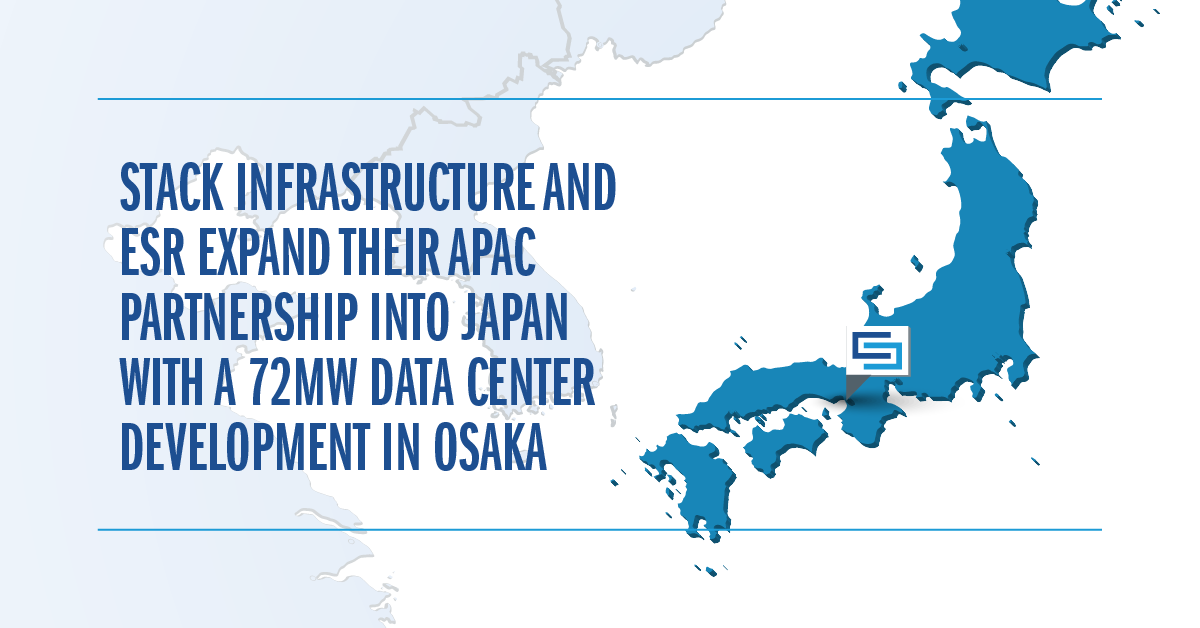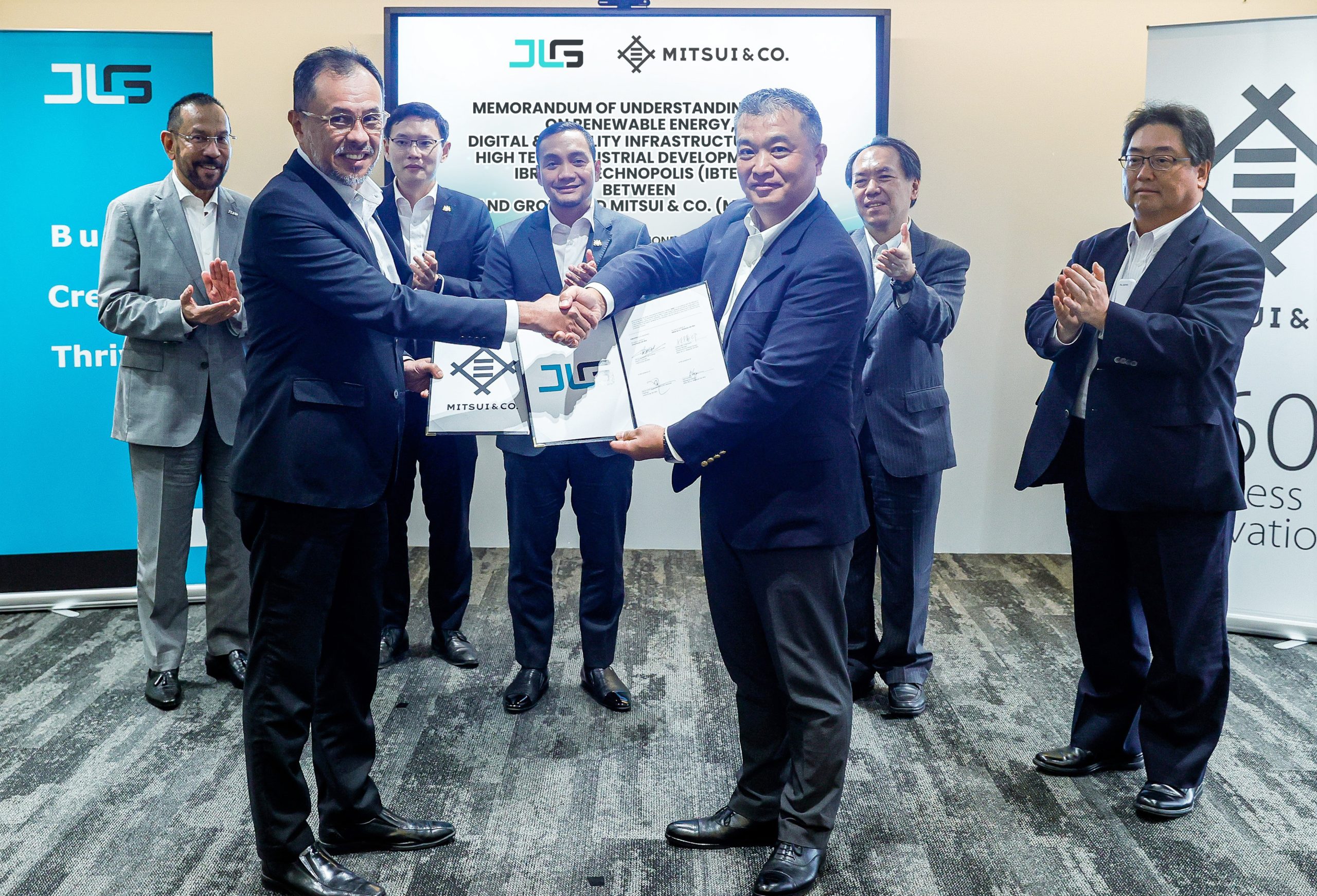Data Centre Projects: Infrastructure Builds, Innovations & Updates
Data Centre Build News & Insights
Data Centre Projects: Infrastructure Builds, Innovations & Updates
Data Centres
The Datum Group announces new data centre facilities
The Datum Group has announced plans to open two new data centre facilities in 2024. The move will see the company expand its colocation offering to meet the growing demand for data centre space.
The two new facilities (FRN2 and MCR2) will be located on the sites of the Datum Group's existing data centres in Farnborough (FRN1) and Manchester (MCR1). They will provide Datum’s clients with even greater choice and flexibility when it comes to choosing a colocation provider.
FRN2, link detached to Datum’s flagship Farnborough facility, will provide 600 footprints on the ground floor, with scope to double this capacity on the first floor. All data halls will provide an average power density of 3.5kW/footprint, capability to deliver high density compute of up to 30kW/footprint, and Tier 3+ resilience.
MCR2 will be located at the Teledata site in Manchester and will offer up to 25,000ft2 of space, 4MVA of power and over 1,000 new server racks in both high and standard density.
Datum Group's CEO, Dominic Phillips, says, "Our decision to open two new data centre facilities is a response to the strong demand we are seeing for our services and will allow us to support our clients’ growth by providing enterprise grade colocation through our network of high security data centres. By expanding our footprint across the UK, we will be able to offer an even wider range of services and solutions that can be tailored to individual client needs."
Matt Edgley, Director at Teledata, comments, “This expansion will allow us to build on our excellent reputation in Manchester for providing premium colocation services. Our new facilities in Farnborough and Manchester will provide even more businesses with the high-quality data centre services they need to grow and succeed.”
Beatrice - 6 February 2023
Data Centre Build News & Insights
Data Centre Projects: Infrastructure Builds, Innovations & Updates
News
Vertiv inaugurates new factory in Ras Al Khaimah
Vertiv inaugurated an expansion of its factory in Ras Al Khaimah, UAE, to support its integrated modular solutions (IMS), low voltage switchgear and busway businesses. The latest addition will help the company proactively address the increasing demand for Vertiv products and services.
This new facility will be strategic in Vertiv’s manufacturing network for its global business operations and it is strategically located to cater to the needs of customers in the Middle East, Africa, Australia, and South Asia regions. The site is an extension of the existing E+I Powerbar Gulf factory, providing an additional 5,700m2 of indoor space serving as a production and office area.
Giordano Albertazzi, CEO, Vertiv, says, “I couldn’t be prouder to see the Vertiv fundamentals of high-performance culture and innovation being brought to life in this new addition in UAE. This expansion allows us to better support our growing customer base in multiple countries, with solutions that are critical to ongoing digital transformation. We will continue to strengthen our capabilities to innovate with and for, our customers.”
The new factory will manufacture a series of power distribution and continuity solutions, including:
• Low-voltage (LV) switchgear, which ensures a continuous flow of the electricity required to support hybrid workforces, power business operations, and deliver digital products and services. All LV switchgear is custom-built using a modular design that can be configured to suit site requirements.
• Vertiv Powerbar iMPB busway system that allows businesses to cost-effectively optimise and adapt power distribution infrastructure over time, maximising availability with continuous power delivery to critical loads.
• Prefabricated modular solutions which offer a complete turnkey package for data centres. Fully assembled power modules are engineered, built, and tested in manufacturing facilities, ready to be installed on-site as a complete pre-integrated unit.
Beatrice - 30 January 2023
Data Centre Build News & Insights
Data Centre Projects: Infrastructure Builds, Innovations & Updates
Data Centres
AirTrunk enters Malaysia with new 150MW hyperscale data centre
AirTrunk has announced its entry into Malaysia with plans to develop a 150MW data centre. Named AirTrunk JHB1 (JHB1), the facility will be the company’s first in Malaysia and ninth in APJ, taking its data centre platform to over 1.35GW of capacity.
The JHB1 campus will span 10.3 hectares of land in Johor Bahru, a strategic location at the southern tip of the Malay Peninsula. Servicing a major cloud availability zone for AirTrunk’s customers, the facility will also offer strong domestic and international connection to regional technology hubs including Singapore, with an end-to-end cross border connection strategy.
Driven by rapidly increasing cloud adoption in Southeast Asia, JHB1 will be anchored by one of the world’s largest technology companies.
AirTrunk Founder and Chief Executive Officer, Robin Khuda says, “It is an exciting time for our business as we announce a new data centre in a new country with a large anchor tenant. AirTrunk continues to develop critical digital infrastructure to support accelerating digitalisation in the region.”
JHB1 will be funded under AirTrunk’s sustainability linked loan framework and will include a number of sustainable innovations to ensure AirTrunk continues to deliver the most sustainable data centres in the region.
Sustainable innovations include a landmark cooling solution that utilises a combination of indirect evaporative cooling (IEC), and direct-to-chip liquid cooling technology. The liquid cooling technology will enable AirTrunk customers to deploy high density racks, reducing energy consumption by up to 20%.
In addition, the data centre will feature a solar-ready roof, equipped to add 5MW of solar panels. The facility is designed to AirTrunk’s industry-low power usage effectiveness of 1.15, and renewable energy supply options will be available to customers.
AirTrunk Chief Technology Officer, Damien Spillane says, “With its flexible designs and innovations driving energy and water efficiencies in tropic climates, JHB1 will be the most sustainable data centre in Malaysia. In line with our net zero by 2030 target, we are working with our customers to source renewable energy to match electricity consumption at the data centre.”
The initial phases of JHB1 will provide 50MW of capacity, with construction commencing shortly and due for completion in 2024. The data centre is ready to scale out to a total capacity of more than 150MW, with further expansion based on customer demand.
Beatrice - 19 January 2023
Data Centre Build News & Insights
Data Centre Projects: Infrastructure Builds, Innovations & Updates
Data Centre Security: Protecting Infrastructure from Physical and Cyber Threats
University of Kent mitigates cyber attacks with Britannic
The University of Kent has deployed a cloud telephony and contact centre solution from Britannic to mitigate risks of growing cyber attacks.
Traditionally, higher education institutions significantly underfunded cyber security efforts, even though the different academic and admin departments are siloed and often operating on different systems and servers, resulting in them being vulnerable. The pandemic accelerated cyber attacks, especially when staff and students were working at home and their systems and networks become prime targets for ransomware attacks. Many of which bought down lots of universities telephony, websites and IT systems, resulting in lessons cancelled and closure until they were back up and running. Around six in 10 (62%) higher education institutions reported experiencing breaches or attacks at least weekly (according to gov.uk, July 2022).
Richard Charley, Telecoms Manager from the University of Kent comments, “We are aware of the growing number of cyber attacks that have taken place over the last couple of years, and we didn’t want to fall prey to one and suffer damage such as lost data or disruption from having our systems bought down. The staff and students have been through enough disruption over the last couple of years, we need to bring stability.
"We are a long-term customer of Britannic and decided on a solution whereby we have added in a cloud telephony and contact centre solution from 8x8 to work alongside our on-premise Mitel solution. By combining local and cloud communications we will have ultimate resilience in security and flexibility to evolve our communications need.”
The hybrid communications model will cater for 19,000 students and 3,000 staff across the two campuses in Kent and four additional sites in Europe. The university has a Mitel MiVoice communications platform that it has virtualised and resides in its two data centres and utilises Britannic’s netX2 SIP service to provide the university with the flexibility and control it requires. SIP gives the control to route call by location, day shift pattern and much more.
“The addition of the 8x8 UC and contact centre provides the University of Kent with the perfect back up service - should the other system suffer an outage they will always this one to fall back on. It is also a modernisation of the contact centre that enables them to add on licences when required which is vital in the clearing period when it’s all hands are on deck and relies on a robust solution,” comments Jonathan Sharp, Director, Britannic.
In 2025 BT will switch off all ISDN and PSTN networks and replace it with full fibre. Now is the time for universities to review their networking infrastructure and modernise it with cloud telephony to increase security and resilience, and add flexibility for staff, students and the contact centre, and in a different way than previously.
Beatrice - 12 January 2023
Data Centre Build News & Insights
Data Centre Projects: Infrastructure Builds, Innovations & Updates
News
University receives £5.8m in big boost to cyber and digital
University of Gloucestershire’s computing and digital technologies programmes have received a multi-million pound boost that will support a strong supply of skilled graduates, following a successful Office for Students (OfS) capital funding bid.
The £5.8 million award, announced buy the OfS, will enable the University to make a major investment in the further expansion of its successful computing, engineering and digital technologies portfolio, and help to tackle the UK’s skills gaps.
The OfS funding will be used to build a specialist three-storey facility at the University’s Park Campus in Cheltenham, extending the existing accommodation for the School of Computing and Engineering and provide a high-quality teaching and learning space for students in Cyber and Technical Computing, Advanced Emerging Technologies, Game Technologies, and Engineering Technologies.
Students benefiting from the state-of-the-art building will include those studying traditional degrees (BSc/MSc), higher apprenticeships, professional short courses, Digital Skills Bootcamps, and new Higher Technical Qualifications.
Vice-Chancellor Stephen Marston says, “The University is delighted that this funding will allow us to take the next major step in the University’s strategic goal to be a centre of excellence for computing and digital technologies, supporting this key economic priority for Cheltenham, Gloucestershire and the region.
“The University has made huge progress in recent years in expanding the range and quality of both our teaching and research in cyber, computing and digital.
“We selected that as a strategic investment priority because it is so important to have a strong local supply of skilled and qualified graduates to support the ambition to make Gloucestershire a world-class hub for cyber and computing.
“The University has been awarded one of the highest funding allocations in the OfS capital programme, to support a step-change in the quality of our specialist facilities and therefore the quality of programmes we can offer for students.”
Professor Kamal Bechkoum, Head of the University’s School of Computing and Engineering, says, “The STEM (Science, Technology, Engineering, Mathematics) skills gap is well documented, both by the government and the private sector, amid ongoing concerns about the supply of STEM skills in the workforce, particularly with the growth of new technology such as artificial intelligence and cyber security.
“The new facilities will provide students with a learning space that resembles as closely as possible the environments they will experience in real-life scenarios while working in industry.
“The new labs will provide innovation testbeds for the application of advanced and emerging technologies such as artificial intelligence, big data analytics, blockchain, and cyber physical systems.
“These testbeds will be used as learning spaces for the development, and the delivery, of multi-disciplinary subjects such as HealthTech, EduTech, LegalTech and Bio-Informatics.”
The OfS funding award will cover the costs of the building work and key specialist equipment that will be housed inside. The project involves the demolition of an existing single storey building at The Park Campus that is no longer fit for purpose.
The project is expected to start in summer 2023, with students gaining access to the new facility in spring 2025.
Carly Weller - 8 December 2022
Data Centre Build News & Insights
Data Centre Projects: Infrastructure Builds, Innovations & Updates
Data Centres
Hyperscale Data Centres: Scale, Speed & Strategy
News
STACK Infrastructure and ESR expand their partnership into Japan
STACK Infrastructure and ESR Group have announced a joint venture to develop a 72MW data centre campus in Osaka.
STACK and ESR will jointly develop and deliver 72MW of data centre capacity in Osaka’s eastern suburb of Keihanna. Construction of the first of three buildings will commence in Q4 2023 and will be ready for service in Q2 2025. The facility will be operated under the STACK brand and further expands STACK and ESR’s APAC partnership, which currently includes a 48MW data centre development in Incheon, Korea.
The strategically located campus will feature robust access to power and network to ensure strong reliability. Available solution options, from colocation to custom build-to-suit, provide hyperscale, cloud, and large enterprise clients with the scalability to meet future growth demands. Higher rack densities and PUE, WUE, and building standards support evolving workloads while achieving sustainability targets.
“Osaka is STACK’s sixth APAC market in 12 months since our entrance into the region, including the expansion of our footprint in both Japan and Australia to over 100MW each,” comments Pithambar (Preet) Gona, Chief Executive Officer of STACK APAC. "This campus further deepens our partnership with ESR, allowing us to combine our capabilities to meet our clients’ strategic requirements in existing and emerging Tier 1 data centre markets.”
“ESR’s strong regional development capability in Tier 1 data centre markets ensures we are well-positioned to continue to aggressively develop data centre facilities across Asia Pacific,” says Diarmid Massey, CEO of ESR Data Centres. “Our partnership with STACK enables us to leverage our respective strengths to target hyperscale customer growth in key markets.”
Beatrice - 7 December 2022
Data Centre Build News & Insights
Data Centre Projects: Infrastructure Builds, Innovations & Updates
Data Centres
Hyperscale Data Centres: Scale, Speed & Strategy
News
JLand signs with Mitsui to develop hyperscale data centre
JLand Group has signed a Memorandum of Understanding (MOU) with Mitsui to jointly explore prospective business opportunities and strategic project developments in Ibrahim Technopolis (IBTEC), including Sedenak Tech Park (STeP), over the next two to three years.
Within the immediate term of the MOU, JLG and Mitsui will conduct a joint feasibility study on the development of a hyperscale data centre, as well as a renewable energy (RE) facility in the form of a captive solar farm to power the data centres in STeP. Following the completion of the study, JLG and Mitsui and its co-developers will form a joint venture partnership to invest, develop and operate these projects.
Syed Mohamed Syed Ibrahim, President and Chief Executive of JCorp and Chairman of JLG says, “This strategic collaboration with Mitsui is a testament to our sustainability-driven projects and dedicated focus on enabling corporations to meet their ESG goals. In an increasingly data-dependent digital economy, we are proactively identifying and implementing renewable energy sources for the future of decarbonising data centres. This initiative is one of the major milestones for JCorp’s vision of a sustainable future, while ensuring the state and country meets its decarbonisation aspirations.”
Akmal Ahmad, Director, Real Estate and Infrastructure Division, JCorp says, “The MOU between JLG and Mitsui reflects the commitment displayed by responsible corporates to shift towards cleaner energy sources to power their businesses. Our strategic partnership to develop these high value sustainable projects brings together collective industry knowledge and technical expertise to further transform the energy industry. JLG is proud to reinforce our contribution to Johor’s renewable energy goals, while catering to the growing needs of industrial customers in STeP that requires green and clean energy as secondary power supply.”
“The positive boom of the data centre sector over the past years has brought the importance of sustainability and renewable energy to the fore, as data centre operators explore cleaner technologies to turn operations green. We are proud to be among the pioneers in hyperscale green data centres in Johor and are excited to partner with Mitsui and RE co-developer to advance the decarbonisation of data centres through clean power procurement,” adds Akmal.
Under this strategic collaboration, STeP - the flagship 700-acre data centre hub - is poised to attract the global hyperscale data centres, not only by offering future availability of RE, but also with comprehensive supporting packages including competitive green project financing from the market. This will provide excellent opportunities for regional customers seeking green data centres to meet their needs.
The collaboration will also involve other industry partners as co-developers, who will contribute sector expertise and knowledge transfer throughout the project investment, design, development, and maintenance phases.
Beatrice - 6 December 2022
Data Centre Build News & Insights
Data Centre Projects: Infrastructure Builds, Innovations & Updates
Understanding intelligent buildings
By Inderpall Sall, Technical Operations Director at NG Bailey IT Services
Smart buildings are often at the centre of discussion these days. Dare to search the term ‘smart building’ and you’ll be confronted by 305 million results, most of which will daze and confuse all but the most technical and IT-minded amongst us. Combine this ‘bleeding edge’ terminology with the aging buildings across most estates, and the resulting gap appears both expensive and complex to navigate.
In fact, the gap deepens when different terminology is used, with everyday consumers now more used to always connected devices and believing a smart building is just one which features the ability for you to control it from your smart phone. We need to reset our view on smart and intelligent buildings. Is a building smart just because it is chock-full of technology? Well, sadly not. A building is smart if it contains appropriate levels of monitoring, control, and visibility of systems to maximise performance, optimise user comfort and support a journey - which in the current climate is most commonly a net zero one. It becomes intelligent when this data then allows it to have some autonomous control.
Behind both smart and intelligent buildings is not just technology the consistent creation of millions of points of real time data. This data is what sits at the heart this smart and intelligent revolution and gives a building owner, landlord or facilities manager a new weapon in their arsenal. However, collecting the data is not enough alone, users must think about what they do with it, after all it’s no good just sitting in the cloud, on a database or even a spreadsheet, it needs to be understood and utilised in decision making.
NG Bailey IT Services has been working with clients on such systems but also to develop ways for them to understand the millions of data points and automated activity easily and in one place. This has meant creating solutions which allow a user whether that be a MD, FD or facilities manager to look at a dashboard and understand the trends, interrogate the statistics and use the information to make real time dynamic decisions that can have a real impact.
This approach to visualising data and sharing it across function is not new, however, the company firmly believes that it plays a pivotal role in the UK not only having better buildings but better businesses too.
The opportunities offered by smart and intelligent buildings, however, aren’t restricted to those built in the years since the digital revolution. As a country with a heritage that spans centuries and a plethora of buildings which can span similar time periods it’s critical that smart and intelligent systems can be integrated no matter the age. We regularly hear it said, “The building’s old, it’s design means there are black spots of connectivity, it can’t be smart” - this isn’t the barrier many perceive it to be. Through NG Bailey IT Services' work with network partners and clients, the company has been developing solutions that transform connectivity, unlocking the potential of the existing built environment. Using the latest technologies from 5G to private wireless networks and other systems, the company has been able to retrofit older buildings to improve their connectivity further.
The ability to continually upgrade connectivity is going to remain at the forefront of the industry moving in to 2023, as the whole of the UK prepares for the great Public Switched Telephone Networks (PSTN) and Integrated Services Digital Networks (ISDN) switch off in 2025. This change will bring to an end the traditional landline telephone system, which despite decades of updates is essentially the same setup and design as the original phone lines of the 1800s. Replacing it with a system designed to meet the needs and uses of modern digital technology. The challenge of adapting traditional systems such as lifts and door controls to a new infrastructure will also present an opportunity for them to embrace smarter and more intelligent solutions.
NG Bailey IT Services says that it is clear from the work it's seeing with clients that embracing automation and intelligent buildings and systems will continue to be at the heart of this decade’s advancements as businesses continue to embrace Industry 4.0 and capitalise on the resilience and efficiencies this brings.
Beatrice - 5 December 2022
Data Centre Build News & Insights
Data Centre Projects: Infrastructure Builds, Innovations & Updates
Decarbonising data centres with green construction technology
In the last several decades, society’s relationship with digital technology has infiltrated nearly every aspect of our daily routines. The world’s economic and social activities are continuing to accelerate towards increasingly digital interfaces and, as a result, the demand for hyperscale data centres is growing exponentially. According to the IDC and Statista, the number of data centres worldwide has grown from 500,000 in 2012 to over 7 million in 2022 and it is showing no signs of slowing down - in fact, it’s picking up speed.
This upward trajectory takes its toll on the climate as data centres are extremely carbon intensive - now accounting for 3.7% of all GHG emissions. Data centres require an enormous amount of energy to operate and involve the implementation of servers, storage, and management platforms that contribute to the carbon footprint of these buildings. Currently, 37% of global emissions are directly linked to the building and construction industry. As e-commerce and data centre construction picks up speed, experts predict that data centres will account for 14% of the world’s carbon emissions by 2040. It is vital that the design and construction of these structures reduce waste and carbon emissions. Operational energy use - primarily to heat and cool data centres - is a considerable portion of whole life carbon emissions, but the embodied carbon in building materials is often ignored. As data centres become more energy efficient, the embodied carbon will become the most significant carbon source - one that can only be tackled prior to construction.
The increasing demand for data storage capacity is an urgent priority, but so is the need for businesses to meet their collective ESG goals. Forward thinking, green construction companies are key to facilitating the production of data centres while decarbonising and driving us towards net zero emissions. The sustainable construction of data centres benefits businesses, the economy, and the planet. It’s a win-win and non-negotiable in order for the planet to avoid warming above the limit of 1.5 degrees set by the Paris Agreement. Technology leaders that can facilitate the global transition to clean energy without disrupting progress are integral to impactful change and a net zero economy.
Founded in late 2018, Nexii Building Solutions is a green construction company that designs and manufactures low carbon buildings. Nexii’s innovative technology reduces construction waste to near zero while lowering the embodied and operational carbon emissions of buildings, directly tackling the impact our built environment has on the climate. As businesses struggle to transition to net zero practices, Nexii streamlines the assembly process, producing buildings that have a longer lifespan, lower environmental footprint, and shorter build time.
At the core of this innovation is Nexii’s assembly process and proprietary building material Nexiite - a sustainable alternative to concrete with approximately 36% less embodied carbon. Nexii’s panels are precision manufactured offsite and rapidly assembled onsite with build times finishing in as little as six days. The panels fit together to create an energy efficient envelope which reduces energy consumption and carbon emissions. Air quality improvement is an added bonus with industry-leading air change rates of Nexii buildings approximately 40% cleaner than conventional buildings. High-profile brands such as Starbucks, Marriott, Scotiabank, and Popeyes operate in Nexii buildings.
Data centres are at the heart of the economy and modern civilisation, and construction practices need to change to keep up with the demand while delivering sustainable, quality buildings. Building data centres using technology like Nexii’s yields many benefits, quicker build times, lower energy and financial costs, and a dramatically reduced impact on our planet. It is not only about building structures that are sustainable, it’s also about building a sustainable future.
Beatrice - 2 December 2022
Data Centre Build News & Insights
Data Centre Projects: Infrastructure Builds, Innovations & Updates
Four big ways AI will disrupt software testing in intelligent buildings
By Emily Newton, Editor-in-Chief, Revolutionized
AI in software testing is growing more common, and for good reason. While today’s artificial intelligence is primarily used for automation and convenience, the technology grows smarter and more efficient every day. In software testing, AI can be used to augment many repetitive tasks to speed up the involved processes and improve accuracy.
Regression testing is one example. Any time software code changes, regression tests are performed to ensure the applications are still functioning as intended. This is often done manually, but AI can automate this entire process by checking at various intervals for issues with an application after code changes.
AI won’t be taking over completely, but it will certainly disrupt traditional software testing. Here’s how.
Regression testing automation
Normally, manual regression testing requires a lot of time and effort from testers and developers. Every time software code changes, tests must be carried out on the resulting application. It warrants a back and forth between the developers and testers - or, if there are no testers, it calls for developers to wear many hats.
AI solutions can completely automate this process, carrying out the tests almost immediately after any code is altered. Provided it’s trained correctly, the AI is always going to be faster, more efficient, and more accurate than manual testers.
Moreover, developers will get the testing results and related data sooner, allowing them to begin working on necessary fixes instantly. Or, if no issues are detected, they can move on to other areas of development faster.
Adding another layer to this, AI can make regression testing better over time as it grows smarter. The regression testing cycle becomes much more reliable as a result.
Early fault and bug detection
A major element of software testing is making sure the code or the applications themselves are up to par and perform at expected levels. So, a large part of testing is seeking out bugs and other software issues and fixing them.
Even the most skilled developers can miss syntax or coding errors, especially in large-scale projects. But while modern programming tools can pinpoint basic mistakes, natural language issues are often ignored until they’re discovered at runtime. AI in software testing can be used to detect these errors by finding faults and bugs.
Machine learning (ML) relies on natural language processing (NLP), training data, and pre-programmed scanning tools to locate potential issues and flag them for review. Better yet, the AI can be used to directly inject new code if and when the fixes are more obvious. It saves time, money, and a lot of headaches.
Productivity boons
With early fault and bug detection and more supportive regression testing, developers and testers can expect some serious productivity boons across the board. With the help of AI and machine learning systems, many of the rote tasks associated with development can be sped up, augmented, or taken on directly by automation solutions.
This is not unlike what we see in other industries, where AI is increasingly used to power robotic process automation (RPA), intelligent automation (IA), and more.
For instance, communication between teams and departments - usually administered in the wake of application tests - can be handled by automated solutions. Rather than manually sending the information, taking however long the related contacts would, the information can be shared immediately with all parties. That same benefit is extended to just about all processes and solutions that AI touches.
Self-healing code
AI and ML enable what’s called ‘self-healing technology’ or self-healing code. Not only can AI identify and detect language issues faster than humans, but when empowered by the appropriate resources, it can also fix that code faster than ever. Early bug and fault detection is just the start.
AI solutions can actually inject code fixes for common issues, or they can be directed to fix more complex problems when they know what to look for and how to react. Better yet, as we generally see with ML, the self-healing algorithms become more accurate and more representative of working code, over time, merely through the ingestion of more information.
This means that when developers change code and it breaks the software, the AI would immediately take over and fix the problem. It reduces the amount of time developers and testers have to spend looking for those problems, but also it significantly cuts down on general troubleshooting. It can also flag common issues for review later to ensure repeated mistakes are not being made and issues don’t compound throughout the development phase.
Good disruption is coming
Thanks to productivity enhancements from smarter and more efficient processes, AI in software testing has the potential to disrupt the field. Manual tasks that require lots of time and effort can be spearheaded almost entirely by automation through AI. Also, early bug detection can be handled by NLP tools, while self-healing code ensures software applications always work at runtime. All of this reduces time spent on troubleshooting and manual bug detection. These benefits will positively disrupt software testing, and we couldn’t be happier about it.
Beatrice - 1 December 2022

Head office & Accounts:
Suite 14, 6-8 Revenge Road, Lordswood
Kent ME5 8UD
T: +44 (0)1634 673163
F: +44 (0)1634 673173









